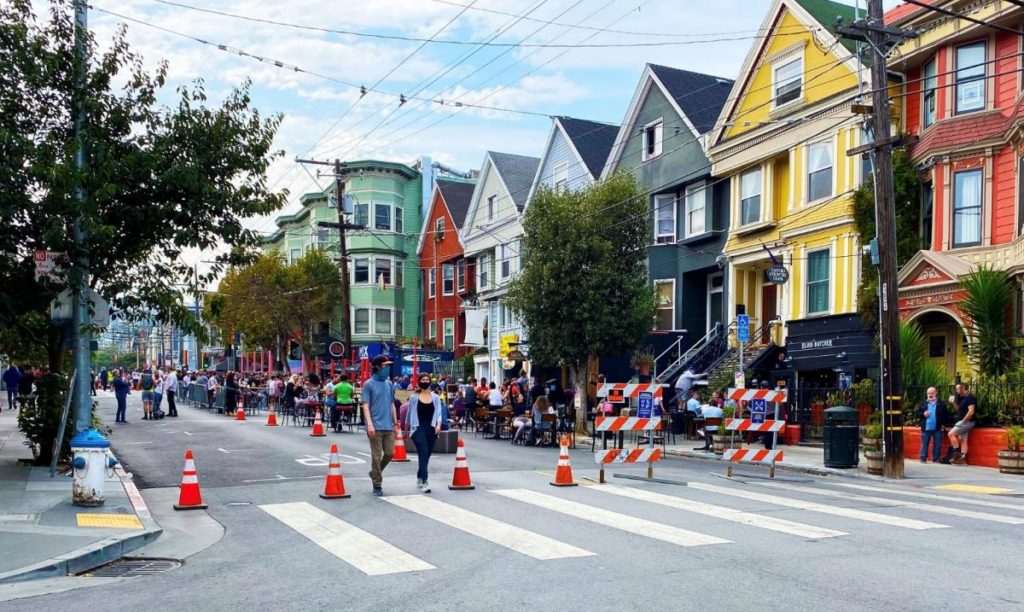
Transportation for America’s 2020 cohort of the Smart Cities Collaborative was always meant to focus on curbside management. But then came COVID-19, radically shifting all aspects of our lives—including how we use curbs. Our new report, COVID and the Curb, explores how cities adapted their curb management strategies to support public health and small businesses, and ideas for better curb policy at the local, state, and federal levels.

A Shared Spaces street in San Francisco, organized by the San Francisco Municipal Transportation Agency.
The following blog is adapted from our new report, COVID and The Curb. Read the full report—chock full of in-depth case studies—here.
Over the past few years, demands for curb space have skyrocketed. No longer just for personal car parking, curbs are where people board buses or streetcars; access app-based shared bicycles, scooters, or cars; and host block parties or parklets. Businesses send out and pick up deliveries at the curb, and unhoused community members, often without other options, use curbs as temporary living spaces.
In 2020, the curb was used for all those purposes and more. Local governments got creative to align curbside management with COVID-19 response efforts—at the same time the pandemic was accelerating some of the changing uses of and growing demand on the curb already underway.
Across the country, a number of cities reprogrammed curb and street space for retail, outdoor dining, and active transportation; working with communities to design curb pilots; and setting up temporary transit lanes and COVID-19 testing sites. Due to the urgent nature of the crisis, cities developed new approaches to a number of challenges (many rooted in issues that existed far before COVID-19) that should be revisited post-pandemic. We explored many of these new approaches in our new report, COVID and the Curb.
The challenge to adapt curbside management to COVID-19 raised a host of questions for cities. How do you balance equitable community engagement with pressure to provide quick solutions? How do you revise permitting processes—like for outdoor dining—to be less arduous and more equitable? How do you clearly communicate new regulations and processes as they’re being changed and implemented?
These questions were made all the more significant because of the disproportionate impact of COVID-19 on certain communities, particularly Black people, Indigenous people, and other people of color. In response, cities across the country piloted new solutions, swapped use cases with peers, stayed as nimble as possible, and reassessed how government assets could better and more equitably serve the public during this crisis.
Here’s what some cities did:
- The City of Boston waived and reduced outdoor dining permit requirements, which previously involved surveyed and engineered design drawings, a public hearing, multi-departmental permitting, and fees. The majority of these requirements were either waived or reduced, and the review and approval process was expedited to take a matter of weeks, rather than months.
- In Ann Arbor, city staff developed a “parking space repurposing” program to allow 40 restaurants to use the on-street parking spaces in front of their properties for extended patio space at no cost to businesses.
- In San Francisco, as traffic started to slowly return after the initial lockdown, the San Francisco Municipal Transportation Agency (SFMTA) set up temporary transit lanes to ensure “that essential workers and transit-dependent San Franciscans do not bear the costs of traffic congestion.” By devoting lanes solely for buses, SFMTA reduced the amount of time buses spend in traffic, protecting public health by reducing riders’ travel time and hence their potential exposure to COVID-19.
- …and more case studies featured in COVID and the Curb.
Looking to the future of curb space
With residents, elected officials, and small business owners paying closer attention to the curb and how it can be strategically leveraged for the public’s benefit, cities now have a unique opportunity to shift management of their curbs in a way that’s equitable, flexible and innovative. Cities can set up curb guidelines to prioritize curb uses, ensure curb signage is understandable and accessible, and address inequitable curb enforcement—and much, much more.
While curb management largely occurs at the local level, there are a handful of policy actions states and the federal government can take to support local governments’ ability to efficiently and equitably manage their curb. For example, providing additional regulatory oversight on delivery vehicles and TNCs, and requiring data sharing between private operators and cities.
Go deeper in these case studies and policy ideas in our new report, COVID and the Curb.




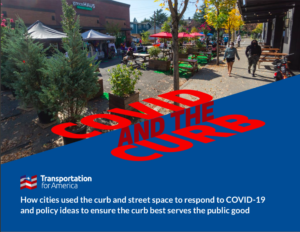
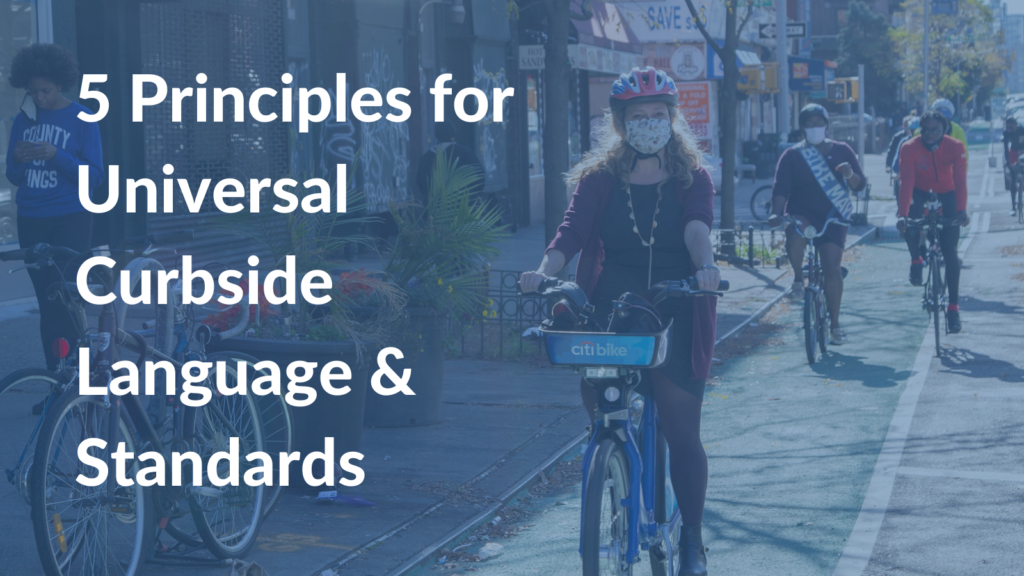
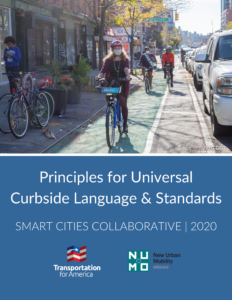
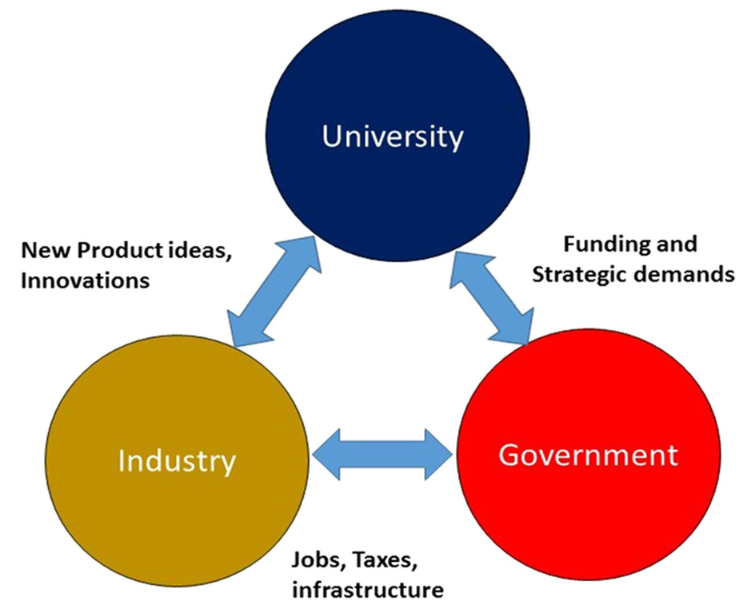

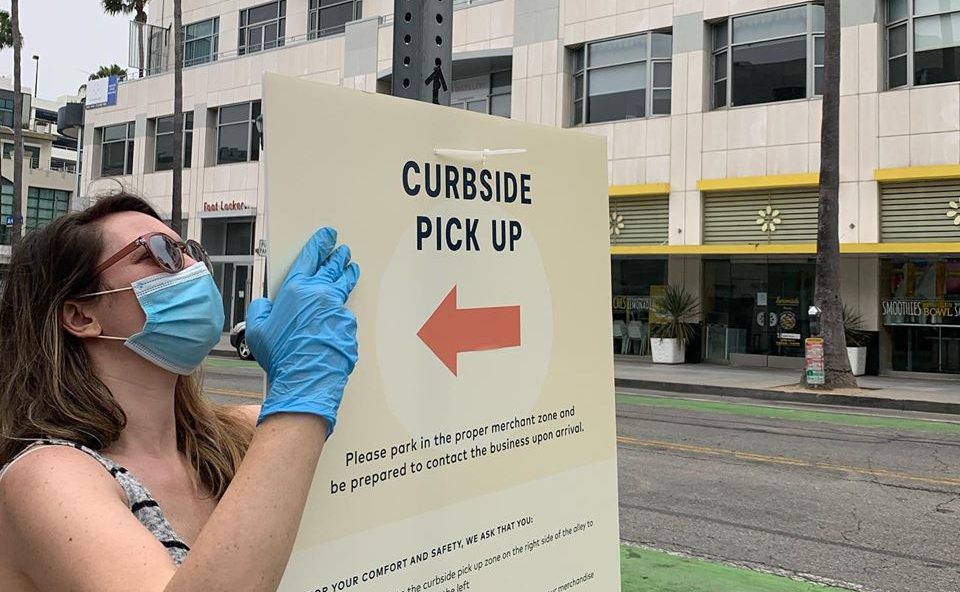
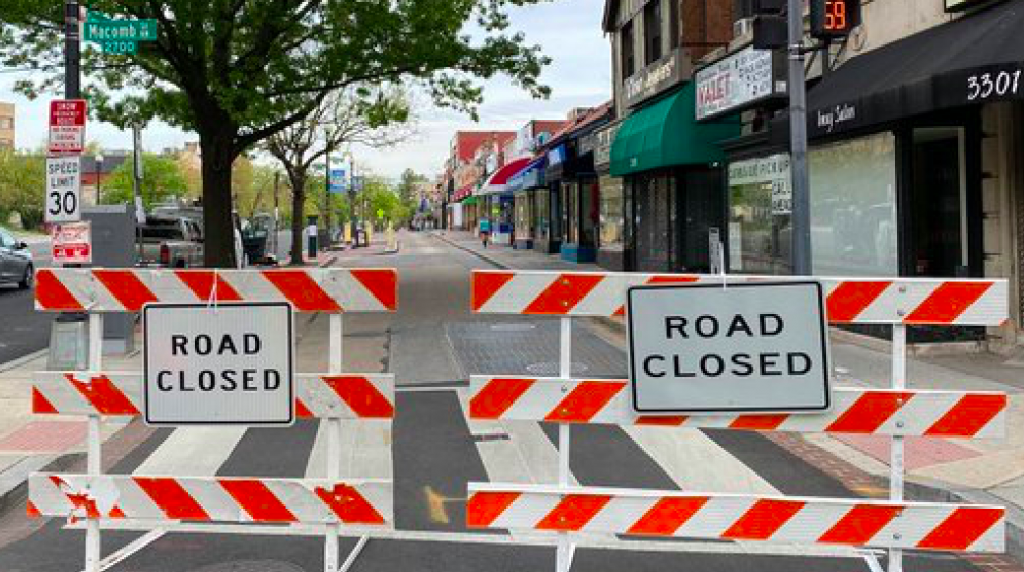

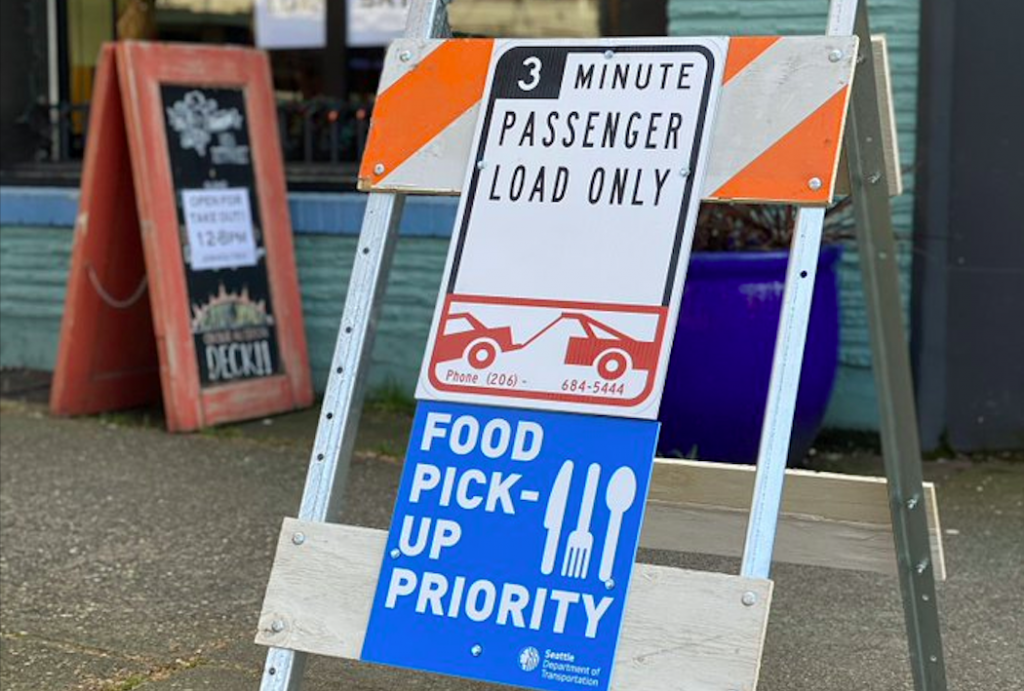
 This blog is part of a special series on curb management and COVID-19. A joint effort of Institute for Parking and Mobility, Transportation for America, and the Institute of Transportation Engineers, this series strives to document the immediate curbside-related actions and responses to COVID-19, as well as create a knowledge base of strategies that communities can use to manage the curbside during future emergencies.
This blog is part of a special series on curb management and COVID-19. A joint effort of Institute for Parking and Mobility, Transportation for America, and the Institute of Transportation Engineers, this series strives to document the immediate curbside-related actions and responses to COVID-19, as well as create a knowledge base of strategies that communities can use to manage the curbside during future emergencies.